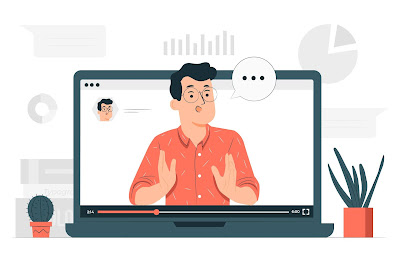I would like to be thankful to all inventors, creators, and designers worldwide who helped to make our day-to-day life much easier.
Let me take you a visit through history to see what invented by who and when.
Please use the comments section if something has to recorrect.
2. Gramophone: Thomas Edison (1877)
3. Seat Belts: George Cayley (mid 19th century)
4. Microscope: Hans and Zacharias Janssen (1590)
5. Refrigerator: Jacob Perkins (1834)
6. Modern Zipper: Gideon Sundback (1913)
7. Blender: Stephen J. Poplowski (1922)
8. Rubber Band: Steffen Peri (1845)
9. Super Glue: Harry Coover (1942)
10. CFL Bulb: Edward Hammer (1976)
11. Fax machine: Alexander Bain (1843)
12. Fiber Optical Cable: Narinder Singh Kapany (1952)
13. Washing machine: Jacob Christian Schaffer (1767)
14. Windscreen Wiper: Mary Anderson (1903)
15. Email: Ray Tomlinson (1971)
16. Razor: King Camp Gillette (1901)
17. Vacuum Flask: James Dewar (1892)
18. Sewing Machine: Barthelemy Thimonnier (1829)
19. Fountain Pen: Petrache Poenaru (1827)
20. Microphone: Alexander Graham Bell (1876)
21. Airbag (Safety Cushion for Vehicles): John Hetrick (1953)
22. Electric Iron: Henry W. Seeley (1882)
23. Bulb: Thomas Edison (1878)
24. Spectacles: Friar Roger Bacon (13th Century)
25. Adjustable Spanner: Johan Peter Johansson (1891)
26. Electronic Speedometer: Josip Belusic (1888)
27. Matches: Gustaf Erik Pasch (1844)
28. Bifocal Spectacles: Benjamin Franklin (1784)
29. Magnetic Compass: in China (between 2nd century BC and 1st century AD)
30. Telescope: Galileo Galilei (1609)
31. Ballpoint Pen: John J Loud (1888)
32. Air Conditioner: Willis Carrier (1902)
33. Pneumatic Tire: Robert William Thomson (1845)
34. Rubber Eraser: Edward Nairne (1770)
35. Barometer: Evangelista Torricelli (1646)
36. Electric Oven: William Hadaway (1896)
37. Microwave Oven: Percy Spencer (1945)
38. Photocopy Machine: Chester Carlson (1938)
39. Freezer: James Harrison (1851)
40. Car: Carl Benz (1886)
41. Bicycle: Karl Von Drais (1817)
42. Motorcycle: Daimler Reitwagen (1885)
43. Dynamo: Michael Faraday (1831)
44. Television: John Logie Baird (1925)
45. Radio: Guglielmo Marconi (1895)
46. Hand Phone: Martin Cooper (1973)
47. Battery: Alessandro Volta (1800)
48. Revolver: Samuel Colt (1835)
49. Machine Gun: Richard Jordan Gatling (1861)
50. Helicopter: Igor Sikorsky (1942)
51. Syringe: BlaisePascal (1650)
52. Thermometer: Daniel Fahrenheit (1709)
53. Submarine: Cornelis Drebbel (17th Century)
54. Aspirin: Felix Hoffmann (1897)
55. Ship: by Ancient Egyptians (4th Century BCE)
56. Internet: Vinton Cerf, Bob Kahn (1983)
57. Bluetooth: Nils Rydbeck (1989)
58. Wifi: Vic Hayes (1997)
59. Computer: Charles Babbage (1830)
60. QWERTY keyboard: Christopher Latham Sholes (1868)
61. Computer Mouse: Douglas Engelbart (1960)
62. Mechanical Printer: Charles Babbage (1822)
63. Compact Disk: James Russell (1960)
64. Camera: Johann Zahn (1685)
65. Sanitary Pad: Mary Beatrice Davidson (1957)
66. Menstrual Tampon: Earl Haas (1931)
67. Disposable Diaper: Marion Donovan (1946)
68. Rubber Condom: Charles Goodyear (1855)
69. Ether: William T.G. Morton (1846)
70. Polio vaccine: Jonas Salk (1952)
71. Insulin: Fedrick G Banting (1921)
72. Smallpox vaccine: Edward Jenner (1796)
73. Penicillin: Alexander Fleming (1928)
74. Airplane: Wilbur and Orville Wright (1903)
75. Diesel Engine: Rudolf Diesel (1890)
76. Patrol Engine: Nicolaus Otto (1876)
77. Train, Steam Locomotive: Richard Trevithick, Andrew Vivian (1802)
78. Solar Energy: Edmond Becquerel (1839)
79. Solar Cell, solar light: Charles Fritts (1883)
80. Radar System: Robert Watson-Watt (1935)
81. Teflon: Roy J Plunkett (1938)
82. Transistor: John Bardeen, Walter Brattain, and William Shokley (1947)
83. Integrated Circuit: Robert Noyce (1961)
84. Laptop: Alan Kay (1976)
85. Cassette Tape: Lou Ottens (1962)
86. Atomic Bomb: Robert Oppenheimer (1945)
87. Space Ship: Soviet Union (1961)
88. Satellite: Soviet Union (1957)
89. Hard Disk: Reynold B johnson, IBM (1956)
90. Solid State Drive: Fujio Masuoka, Toshiba (1980)
91. Computor monitor: Karl Ferdinand Braun (1897)
92. Scanner: Ray Kurzweil (1957)
93. Modern School: Horace Mann (1837)
94. Examination: Henry Fischel (19th Century)
95. Homework: Roberto Nevelis (1905)
96. Electronic Money: David Chaum (1983)
97. Anesthesia: Horace Wells (1844)
98. The Printing Press: Johannes Gutenberg (1440)
99. Video Games: William Higinbotham (1958)
100. Social Media (Six Degrees): Andrew Weinreich (1997)





Comments
Post a Comment